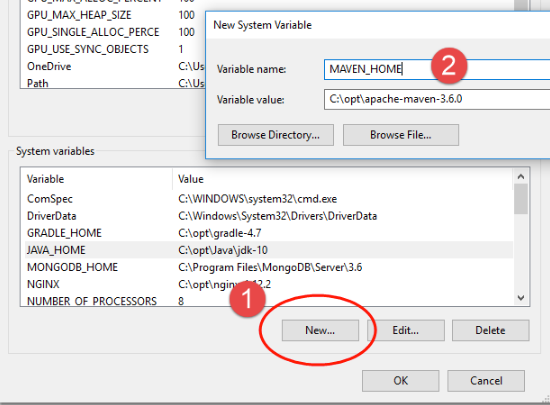

Also, when we actually try to create a single jar / flat jar file that is created out of multiple dependent maven projects.The main project which will include the sub project, will not be able to access the classes and methods which are present as part of the sub project’s jar file. When we work with multiple maven projects and include them as dependencies to other projects.Now let look at couple of reasons why we suggest to go for first approach and not for second approach.
#Maven install full#
You can even provide a hard coded or full absolute path instead of the above notation. $ refers to your project’s base directory and the remaining part is the path to your jar from the base directory. And in the path we need to specify the path where jar file is located. That is you can call the respective classes and methods which are part of the included jar file.Ībove is the example based on the syntax provided by maven.

Once the custom "Maven Build" configuration was chosen, it will then invoke Maven with the options in this run configuration.This approach allows you to include jar file as part of your maven project and be able to work in eclipse properly. As such, this pop-up is asking the user to select one. In the above screenshots, you can see that there was 2 custom "Maven Build" run configuration, which were named clean and clean install. If you have more than one, it will ask you for the one to run:
#Maven install install#
It will have the same effect as running the command mvn install on the command-line, with an external Maven installation. This is the simple one: "Maven install" will launch the configured Maven installation in Eclipse with the goal install.

So what are all those "Run As" options? Maven install attribute checking "Update Snapshots" will launch Maven with the -U flag, etc. Adding a profile will launch Maven with a -P.


 0 kommentar(er)
0 kommentar(er)
